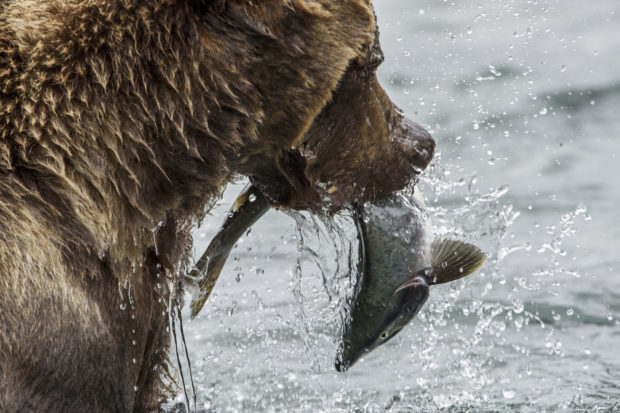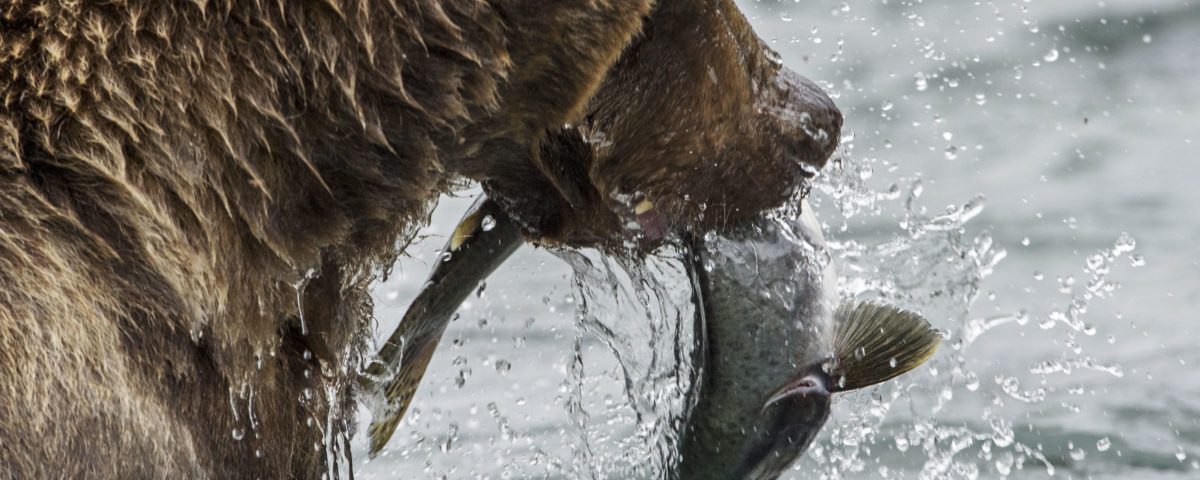With just three weeks until the Obama team transfers executive power to the Trump Administration, the current leadership of the U.S. Fish and Wildlife Service is running out of time to remove federal Endangered Species Act protections from the grizzly bear population in the Greater Yellowstone Ecosystem. Yet, with many leaders within the conventional wildlife management industry calling for delisting, the animals still face a looming crisis. The likely incoming Interior Secretary, Congressman Ryan Zinke of Montana, is almost certainly going to face home-state pressure to eliminate federal protections for the bears.

If the great bears are delisted, the states will take charge of managing them, and public officials in Idaho, Montana, and Wyoming seem to be champing at the bit to open trophy-hunting seasons on them. Photo by John E. Swallow
If the great bears are delisted, the states will take charge of managing them, and public officials in Idaho, Montana, and Wyoming seem to be champing at the bit to open trophy-hunting seasons on them — for the first time in 40 years. This will be one of the first tests for Mr. Zinke in his new role.
It won’t take him long to find out that the majority of Americans are strongly opposed to the delisting of grizzly bears, and a supermajority are opposed to trophy hunting. The grizzly bear is not only a lure for hundreds of thousands of tourists who trek to Yellowstone and Grand Teton national parks every year to catch a glimpse of the bears — generating millions in commerce for surrounding communities — but they are also a sacred animal to Native nations in the Rocky Mountain region and beyond.
Earlier this week, the Crow Tribe (the tribe that adopted President Obama) organized more than 125 tribes from Canada and throughout the United States to sign a proclamation opposing delisting and trophy hunting. This treaty is only the third cross-border First Nations/Native American treaty in 150 years, and the incoming administration would be wise to heed their plea. In describing this historic treaty, Native News stated: “…the document has become a symbol of intertribal unity in defense of sovereignty, spiritual and religious protections, treaty rights, sacred site preservation and holding the federal government accountable for its trust responsibility to tribes.”
Last May, nearly 60 prominent biologists and conservationists submitted a letter to the U.S. Fish and Wildlife Service criticizing the delisting plan. Earlier this month, filmmakers Anthony Birkholz and Marni Walsh released a short video, Yellowstone’s Grizzly Science, featuring leading conservation and carnivore biologists, as well as climate change scientists, who express grave concerns about delisting the grizzly bears. The video urges the continued protection of this iconic species by restoring them to suitable habitat and reconnecting isolated populations, rather than allowing trophy hunters to gun them down.
Even without the opening of a trophy-hunting season, Yellowstone’s grizzly bears already face a multitude of threats to survival. Within the last two years alone, there have been more than 115 confirmed deaths – out of a population of only 700 or so individuals. Some biologists speculate that the deaths of approximately one-half to two-thirds of grizzly bears killed by humans go unreported. The bears don’t reach sexual maturity for a number of years, and they are slow to reproduce, so this level of human-caused mortality is at a level that puts the viability and future of the species at risk.
Other threats loom. The grizzly bears’ primary foods, white bark pine and cutthroat trout, have dramatically diminished, perhaps due to climate change, requiring them to use more energy to find other food sources and forcing them into more conflicts with people – a circumstance where the bears almost always lose.
It was just about a year and a half ago that Americans and other people of conscience throughout the world expressed shock and dismay and indignation after they learned that an American trophy hunter shot an African lion right outside of Zimbabwe’s most famous national park. What’s the difference here? The grizzly bear is one of North America’s largest carnivores, an economic engine for the rural reaches of Idaho, Montana, and Wyoming, and a species still struggling to survive. Nobody kills African lions or grizzly bears for food, but merely for the bragging rights and the trophies. To unleash trophy hunters on this small population of Yellowstone region bears would be a disgrace, would be a gut-punch to the tourism industry, and would ignite a firestorm for a new administration that already has plenty of controversy on its to-do list. Keep the federal protections. Let the bears be.
The post Grizzly bear fate likely to rest with Trump Administration appeared first on A Humane Nation.
Enviroshop is maintained by dedicated NetSys Interactive Inc. owners & employees who generously contribute their time to maintenance & editing, web design, custom programming, & website hosting for Enviroshop.
